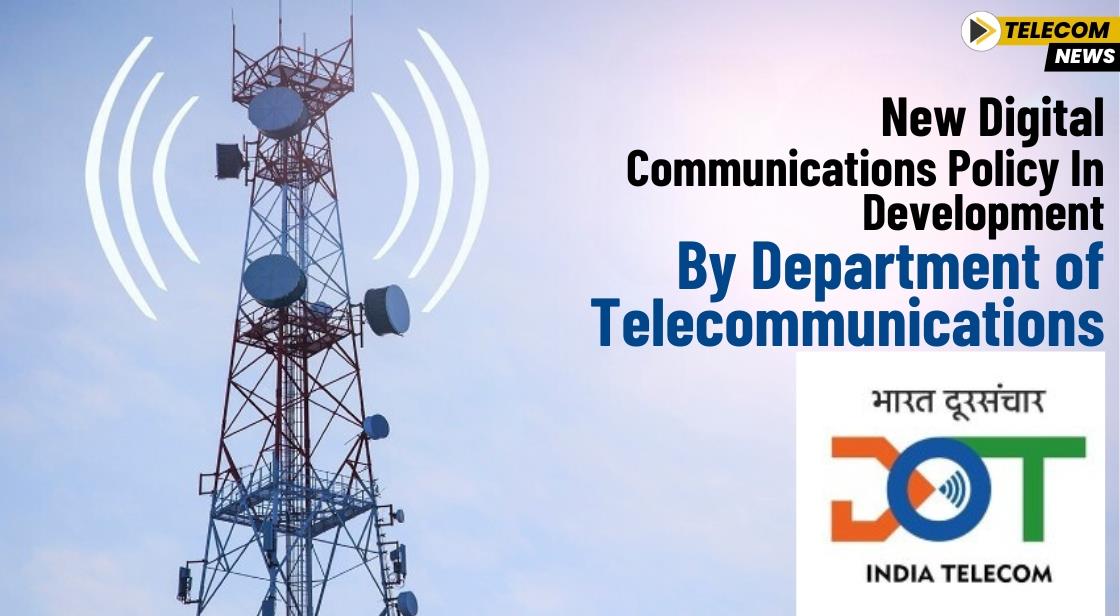New Digital Communications Policy in Development by Department of Telecommunications

News Synopsis
Following the implementation of the Telecom Act, the Department of Telecommunications (DoT) is now in the process of formulating a new National Digital Communications Policy (NDCP). This policy will serve as a strategic roadmap for the growth of the Indian telecom sector over the next five years, and will outline key targets and objectives to be achieved.
One of the major highlights of the upcoming policy is expected to be a series of government incentives aimed at encouraging telecom operators to procure telecom equipment from domestic manufacturers. This initiative aligns with the government's broader goal of promoting local manufacturing and reducing reliance on imports.
According to officials, the new policy will also revamp several of the targets set in earlier policies, incorporating lessons learned from previous years. The focus of the new NDCP will extend to various segments of the telecom ecosystem, including emerging technologies, the identification of new spectrum bands, a detailed roadmap for the implementation of 6G, and strategies to boost local manufacturing. Official sources have indicated that this new policy will likely be unveiled by April next year.
The Need for an Updated Digital Communications Policy
The last National Digital Communications Policy was introduced for the 2018-2022 period, replacing the National Telecom Policy of 2012. Sources within the telecom industry note that, given the fast-paced developments in technology, it is essential to refresh such policies every five years to keep up with global trends. In the 2018 policy, the government renamed it from telecom to digital communications to reflect the sector's broader scope and linkages with various industries.
The previous policy set several ambitious targets, such as providing universal broadband connectivity, increasing the sector's contribution to India's GDP from 6% in 2017 to 8% by 2022, creating four million jobs, and fiberising at least 60% of telecom towers across the country.
“The department has started the consultations on the shape and form of the new policy. Mostly all the learning from the previous policy and the present trends in the telecom sector will be analysed before coming up with a concrete draft,” said a senior official.
Challenges Faced in Achieving Previous Policy Targets
While the 2018 policy aimed to significantly enhance broadband and fiberisation across the country, progress has been slower than anticipated in several areas. For example, targets related to public Wi-Fi hotspots, tower fiberisation, BharatNet connectivity, and home broadband penetration have not been fully met. Analysts and industry experts have pointed out that, despite these challenges, the government’s sectoral reforms, spectrum auctions, research and development initiatives, and the Telecom PLI (Production-Linked Incentive) scheme have largely benefited the telecom industry.
However, in terms of fixed-line broadband access, the government had aimed to enable 50% of households to have access by 2022. As of 2023, a Morgan Stanley report revealed that only 3% of households had access to fixed-line broadband, highlighting a significant gap between the set targets and actual outcomes.
Similarly, the government set a target for fiberising 70% of telecom towers by FY25, but as of 2023, only around 44% of towers have been fiberised. Out of the 800,000 mobile towers in India, about 350,000 have undergone fiberisation. In July 2022, this figure stood at 35%, showing gradual progress, but still leaving a significant portion untouched. Experts note that low tower fiberisation could impact the quality of newly launched 5G services, preventing users from experiencing high-speed internet capabilities comparable to 4G.
OTT Services and Regulatory Challenges
The 2018 policy also addressed the need for a framework for regulating Over-the-Top (OTT) services. However, the government later clarified that OTT services fall under the jurisdiction of the Ministry of Electronics and Information Technology (MeitY), rather than the DoT. Despite this clarification, the Telecom Regulatory Authority of India (TRAI) is currently working on a consultation paper to explore whether additional regulation of OTT services is necessary, indicating that the matter is still under active consideration.
Conclusion: What to Expect from the New Policy
With the new National Digital Communications Policy in development, the Indian telecom sector can expect a refreshed vision that addresses the challenges faced over the past five years. The focus on boosting local manufacturing, implementing emerging technologies like 6G, and addressing fiberisation issues will be crucial to meeting the needs of an increasingly digital economy. The government’s continued emphasis on incentivising local telecom equipment manufacturers will also play a key role in strengthening the country's telecom infrastructure and reducing its reliance on imports.
You May Like









